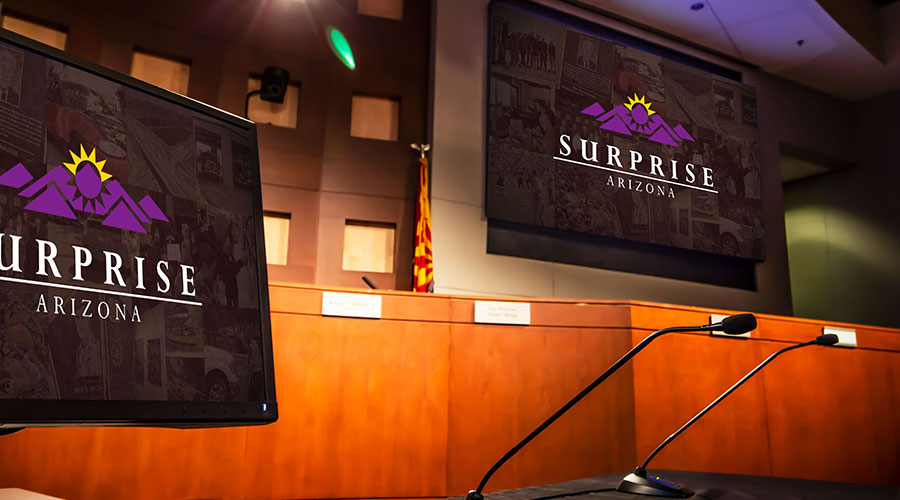
The Best AV Technologies for Government Agencies
Your local courthouse or municipal building is a beacon for citizens that want to know more about what’s going on in their community. As the person in charge of audiovisual technology, you’re responsible for many things, including providing access to meetings, assistive listening in public spaces, or emergency notifications. Your audiovisual technology should be easy to use and work every time—especially for emergency meetings. Read on to learn more about AV solutions that can make your job easier and help government officials better serve their constituents.
TAKE YOUR MESSAGE TO THE PEOPLE WITH AV TECHNOLOGY
Bad weather and remote rural areas can present challenges for citizens to attend meetings in-person. Fortunately, the show can go on as there are ways that you can include remote participants in your meetings using AV technology. Video conferencing systems and live streaming capabilities are AV technologies that help local governments meet this accessibility requirement, said Julianna Bosso, account executive for higher education and government at Level 3 AV. Agencies can use simple, software-based conferencing solutions such as Zoom or Cisco Webex that only require a camera, microphones and speakers, or they can invest in more robust systems. With video collaboration, agencies can reduce travel times and cost as well as engage with citizens in real-time. Need a secure solution to safeguard your data? Don’t worry, software-based solutions Zoom and Cisco Webex use 256-bit AES encryption to keep your data safe.
As part of the upgrade to the city council chambers in Surprise, Arizona, Level 3 AV deployed a control room with a broadcast video system that connects to the in-room AV systems. The broadcast system takes the feed from the council chambers and allows you to record or stream meetings using the broadcast standard resolution. This gives onsite and remote citizens the chance to watch and participate in council meetings. For citizens who attend public meetings in person, clear and intelligible audio is critical, Julianna said. Wireless presentation systems are a cost-effective way to share content with meeting attendees and can be implemented in a variety of locations—town halls, public schools, universities, and libraries—anywhere a public meeting is being held. With wireless presentation systems, agencies don’t have to spend as much money on wires, connectors, and adapters, and the systems are also compatible with all kinds of devices, including personal smartphones and laptops.
Government agencies are required to keep citizens aware of upcoming meetings, hearings, and events. AV technologies such as digital signage and video walls help government offices and agencies meet that requirement, Julianna said. Level 3 AV replaced the projectors in the city council chambers with 2x2 video walls (2 displays high and wide) that show dynamic content to the audience.
Additionally, Level 3 AV installed three display areas in the lobby that can be used as video overflow for heavily attended meetings or to display upcoming meetings and events. In accordance with the Americans with Disabilities Act (ADA), public areas—including government spaces—must be accessible to the general public. While most people think of ramps and wider bathroom stalls when they think of ADA compliance, the law includes providing the appropriate auxiliary aids and services for people with disabilities. AV technology has a role to play here as well. For example, Julianna said, public spaces such as libraries and auditoriums can be outfitted with assistive listening devices. Hearing loop systems from manufacturers such as Listen Technologies and Williams Sound enable you to meet audio compliance requirements so that your building is equally accessible to everyone.
COMMON BARRIERS TO UPDATING AV TECHNOLOGY
One of the biggest barriers to state and local governments adopting new AV technology is cost, Julianna said. Many government entities are changing from analog to digital systems, which can require a significant investment. Level 3 AV is an Arizona state contract vendor, which means they provide expert AV integrations and installations at an affordable price. Government buildings that are listed on the National Register for historical significance face additional challenges. Any renovation or AV upgrade must follow strict standards and guidelines that ensure the historical value of the property is retained and preserved. An experienced integrator like Level 3 AV can help clients comply with these types of requirements.
For example, Level 3 AV worked on an AV upgrade at a school in Tucson, Arizona with historic chalkboards that couldn’t be altered. In order to install interactive whiteboards in the classrooms, Level 3 AV designed and built special mounts to go over the chalkboards. This allowed the school to preserve their history and provide updated technology for the teachers and students. Another common barrier, Julianna said, is executive buy-in.
With tight budgets, decision makers can be hesitant to spend money on AV upgrades. However, there are cost-effective ways government agencies can meet their requirements for accessibility using AV technology.
To learn more about which AV solutions are best—and in budget—for your state or local government agency, reach out to us here or click the chatbox below to connect instantly. We look forward to working with you!

